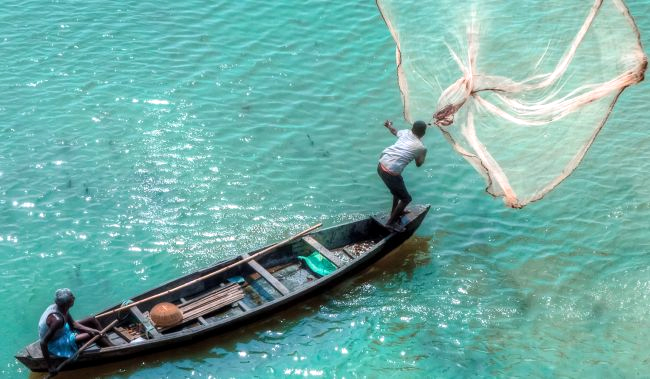Andhra Pradesh has emerged as a dominant force in India’s fishing and aquaculture sector, accounting for an impressive 41% share of the country’s total fish production. This remarkable achievement not only underscores the state’s strategic geographic advantages but also highlights the concerted efforts of local authorities, farmers, and businesses in promoting sustainable aquaculture practices.
A Thriving Industry
The aquaculture industry in Andhra Pradesh has witnessed exponential growth over the past few decades, transforming the state into the leading producer of seafood in India. The state’s coastal line, which stretches over 972 kilometers along the Bay of Bengal, provides a conducive environment for marine and brackishwater aquaculture. With ideal climatic conditions and abundant water resources, Andhra Pradesh has capitalized on its geographic advantages to boost its aquaculture output significantly.
Key Contributions to Fish Production
As per the latest statistics, Andhra Pradesh produces approximately 3.6 million metric tons of fish annually, making it the largest fish-producing state in the country. Key species cultivated include:
- Shrimp: The state’s shrimp farming sector has seen remarkable growth, especially with the cultivation of Black Tiger shrimp and Litopenaeus vannamei. The focus on high-quality seed production and disease management has enabled farmers to achieve higher yields and profitability.
- Finfish: Andhra Pradesh is also a significant producer of various finfish species, including rohu, catla, and tilapia. The state’s farmers have increasingly adopted advanced farming techniques to enhance productivity and sustainability.
- Mollusks and Crustaceans: The cultivation of mussels, clams, and crabs has also gained momentum, contributing to the state’s diverse aquaculture portfolio.
Government Initiatives and Support
The Andhra Pradesh government has implemented several policies and schemes aimed at promoting the aquaculture sector. The Pradhan Mantri Matsya Sampada Yojana (PMMSY) is a flagship scheme that focuses on enhancing fish production, creating infrastructure, and ensuring sustainable practices.
Key initiatives under the PMMSY include:
- Financial Assistance: Subsidies for farmers to adopt modern aquaculture practices, including the establishment of hatcheries and feed mills.
- Training and Capacity Building: Programs aimed at equipping farmers with knowledge about disease management, sustainable farming practices, and market access.
- Research and Development: Collaborations with research institutions to develop disease-resistant shrimp varieties and improve aquaculture technologies.
Sustainable Practices and Certification
With growing awareness around sustainability, Andhra Pradesh has also emphasized responsible aquaculture practices. The state’s farmers are increasingly adopting eco-friendly methods, such as Integrated Multi-Trophic Aquaculture (IMTA), which promotes biodiversity and enhances resource efficiency.
Furthermore, initiatives like the Aquaculture Stewardship Council (ASC) certification are being embraced to ensure that aquaculture practices meet global sustainability standards. This not only helps in maintaining environmental balance but also enhances market access for farmers looking to export their products.
Economic Impact and Livelihood Generation
The fishing and aquaculture sector in Andhra Pradesh plays a pivotal role in the state’s economy. It not only generates substantial revenue but also provides livelihoods to millions of people, particularly in rural areas. Fish farming has become an essential source of income for many families, reducing poverty and improving the standard of living.
The aquaculture industry has also led to the development of ancillary sectors, including feed manufacturing, processing, and logistics, creating additional employment opportunities.
Challenges Ahead
Despite its successes, the aquaculture sector in Andhra Pradesh faces several challenges:
- Environmental Concerns: Issues such as water pollution, shrimp diseases, and overfishing threaten the sustainability of aquaculture practices.
- Market Volatility: Fluctuations in global seafood prices and demand can directly impact farmers’ incomes, necessitating better market access and price stabilization measures.
- Climate Change: Rising temperatures and changing weather patterns pose risks to fish production and habitat, requiring adaptive strategies.
Looking Ahead: The Future of Aquaculture in Andhra Pradesh
As Andhra Pradesh continues to lead India in fishing and aquaculture, the focus must remain on sustainable development and innovation. Embracing new technologies—such as artificial intelligence for monitoring fish health and automated feeding systems—will enhance productivity and efficiency.
Moreover, fostering partnerships between the government, research institutions, and the private sector will be essential in addressing challenges and driving growth in this vital sector.
In conclusion, Andhra Pradesh’s significant contribution to India’s fishing and aquaculture industry reflects a successful blend of natural resources, government support, and the resilience of local communities. With continued focus on sustainability and innovation, the state is well-positioned to maintain its leadership role and further bolster India’s aquaculture sector in the years to come.

